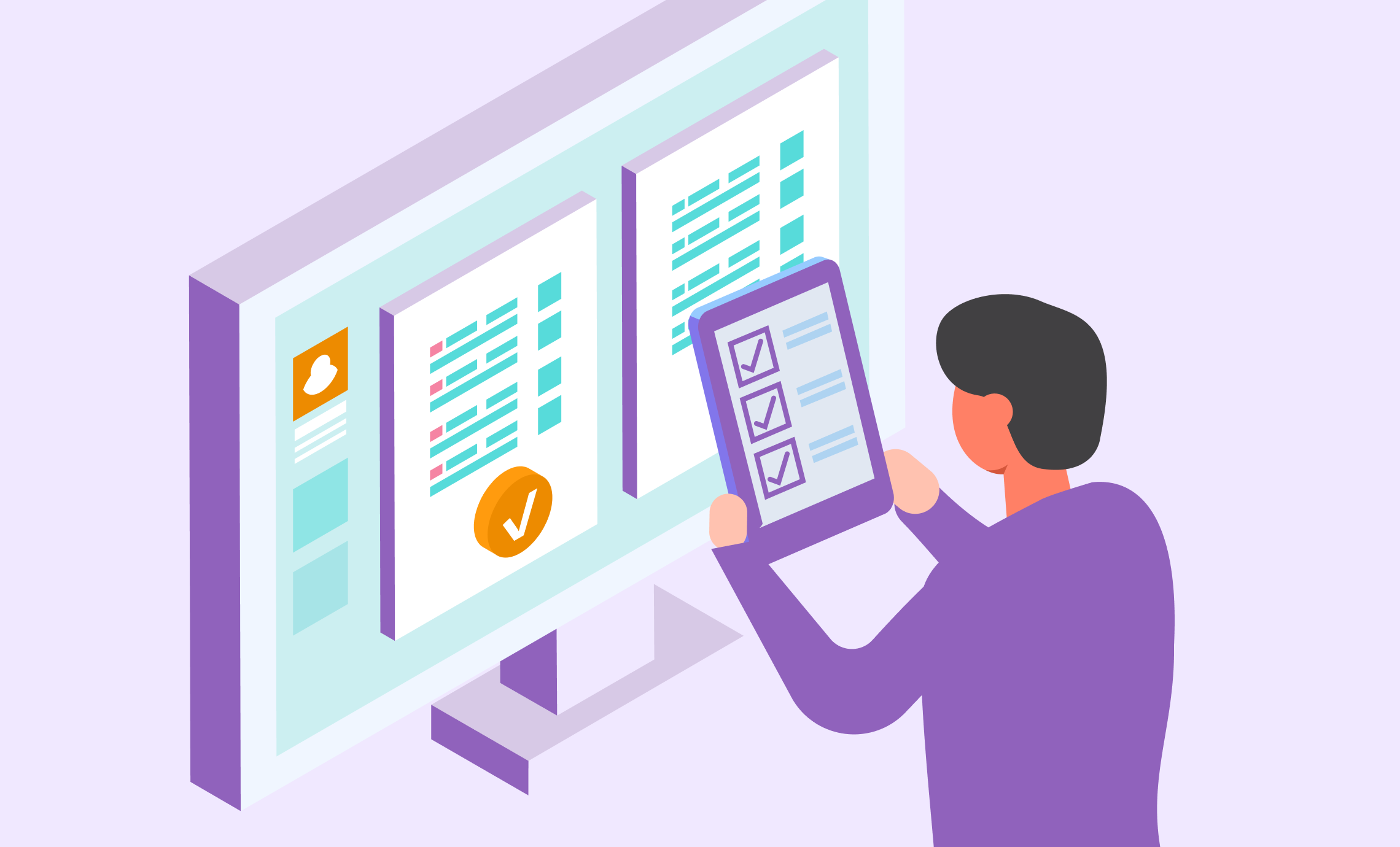Trade shows are valuable opportunities to generate leads and build relationships. Knowing how to capture high-quality leads requires a thoughtful plan and is the key to success at your next trade show.
Capturing leads involves more than handing out business cards. Effective lead capture engages prospects in meaningful conversations and nurtures relationships that will last beyond the show. With a well-defined strategy, you can increase your chances of capturing leads.
Set clear objectives for your lead capture
In order to make the most of your trade show experience, it’s crucial to set clear objectives for capturing leads. This will ensure that your efforts are focused and aligned with your overall business goals.
Here are three key steps to help you establish a solid foundation for lead capture success:
Define your goals and target audience
Before diving into trade show lead capture strategies, it’s important to define your goals and identify your target audience. This will provide clarity and direction for your lead capture efforts.
Here’s how you can define your goals and target audience effectively:
Goals
Start by asking yourself what you want to achieve through your participation in the trade show. Are you looking to generate new sales leads, increase brand visibility, launch a new product, or forge strategic partnerships?
Your goals should be specific, measurable, achievable, relevant, and time-bound (SMART). For example, a specific goal could be to collect 100 qualified leads by the end of the trade show. This will give you a clear direction as you plan and execute your lead capture strategy.
Target audience
To capture valuable leads, you need to have a clear understanding of your target audience. Begin by analyzing your existing customer base and identifying common characteristics, such as demographics (age, gender, location), psychographics (interests, values, behaviors), and buying preferences. This will help you create buyer personas that represent your ideal customers.
Consider conducting market research to gain insights into your target audience’s needs, pain points, and motivations. You can utilize surveys, interviews, and social media analytics to gather valuable data. The more you know about your target audience, the better you can tailor your messaging and capture leads that are most likely to convert.
Remember that your goals and target audience may vary for each trade show or event. Adapt your approach based on the specific goals and audience demographics associated with the event.
Determine what type of leads you want to capture
Not all leads are created equal. Once you have a clear understanding of your goals and target audience, it’s essential to determine the specific types of leads you want to capture at the trade show.
Consider the following factors:
Lead qualification
Identify the criteria that make a lead valuable to your business. This can include factors such as the prospect’s buying intent, budget, decision-making authority, and alignment with your product or service offering. By defining your ideal lead profile, you can focus your efforts on capturing leads that are most likely to convert into customers.
Strategic partnerships
In addition to potential customers, trade shows also offer opportunities to connect with strategic partners, industry influencers, and collaborators. Determine if you’re seeking partnerships or alliances with other businesses or individuals that can help expand your reach, provide complementary services, or contribute to your overall growth strategy.
By specifying the characteristics of your desired leads, you can tailor your lead capture tactics and messaging to attract and engage the right individuals.
Establish a follow-up plan
Capturing leads is just the first step; the real value lies in nurturing those leads after the trade show. To maximize your return on investment, create a well-defined follow-up plan. Determine how and when you will reach out to your captured leads, whether it’s through personalized emails, phone calls, or social media interactions.
Automating parts of your follow-up process can also be beneficial. Utilize customer relationship management (CRM) software to track and manage your leads effectively. This will help you stay organized, ensure timely follow-ups, and provide a seamless experience for your prospects.
Prepare for the trade show
To ensure a successful lead capture experience at your next trade show, thorough preparation is key. In this subsection, we’ll explore essential steps to take when preparing for the trade show.
By following these guidelines, you’ll be well-equipped to maximize your lead generation efforts:
Promote Your Presence at the Trade Show
Building anticipation and awareness prior to the trade show can significantly increase your chances of capturing quality leads. The following promotional strategies are effective at promoting your presence at the trade show:
Email marketing
Send targeted emails to your existing customer base and prospects, notifying them of your participation in the trade show. Highlight the benefits they can expect by visiting your booth, such as exclusive product demonstrations, discounts, or giveaways. Personalize the emails whenever possible to enhance engagement.
Social media campaigns
Leverage your social media platforms to create buzz around your presence at the trade show. Share sneak peeks, behind-the-scenes content, and teasers about exciting announcements or activities happening at your booth. Utilize relevant hashtags and encourage followers to share and engage with your posts.
Trade show website landing page
Create a dedicated landing page on your website that provides detailed information about your participation in the trade show. Include the date, time, and location of the event, along with an overview of what attendees can expect from your booth. Make sure to include a prominent call-to-action button or form for interested visitors to schedule appointments or request more information.
Press releases and media outreach
Draft and distribute press releases to industry publications and relevant media outlets, highlighting your participation in the trade show. Offer interviews or exclusive previews to journalists or bloggers covering the event. This can help generate media coverage and attract a wider audience to your booth.
Train your staff on the lead capture process
Your booth staff plays a crucial role in capturing and engaging leads effectively. Equip them with the necessary skills and knowledge to make the most of every interaction.
Here are some training tips to help you:
Lead qualification and engagement
Train your staff on effective lead qualification techniques to ensure they are engaging with the right prospects. Provide guidelines on asking targeted questions to uncover needs and pain points, and coach them on tailoring their messaging accordingly.
Product and service knowledge
Ensure your staff is well-versed in your products or services, including their unique selling points, key features, and benefits. This will enable them to effectively communicate value propositions to potential leads.
Active listening and communication skills
Encourage your staff to actively listen to prospects and engage in meaningful conversations. Teach them how to overcome objections, provide relevant information, and convey enthusiasm about your offerings.
Appointment setting and follow-up
Train your staff on capturing lead information accurately and efficiently. Emphasize the importance of scheduling appointments or follow-up actions to ensure a seamless transition from the trade show to the next steps in the sales process. Conduct role-playing exercises or simulations to reinforce these skills and provide feedback for improvement.
Have a plan for data management
Effective data management is essential for organizing and leveraging your captured leads. Establish a clear plan for managing and storing lead information.
These are the steps to create a data management plan:
Lead capture tools
Identify the lead capture tools you’ll use during the trade show, such as mobile apps, scanners, or forms. Ensure that your staff is trained on how to use these tools properly to collect accurate and complete lead data.
Data segmentation and categorization
Determine how you will categorize and segment the captured leads based on factors such as industry, job role, or level of interest. This will allow for more targeted and personalized follow-up communication.
CRM integration
Integrate your lead capture tools with your customer relationship management (CRM) system. This will streamline the process of transferring and tracking lead data, enabling you to efficiently manage follow-up activities.
Data privacy and compliance
Ensure that your data management practices align with applicable data privacy regulations, such as GDPR or CCPA. Obtain consent from leads for further communication and make sure to handle their data securely. By having a well-defined plan for data management, you’ll be able to effectively nurture your leads and convert them into customers.
Capturing leads at the trade show
Capturing leads at a trade show requires efficient lead retrieval tools, effective engagement with attendees, and the ability to ask qualifying questions. The following strategies should set you up for success:
Choose the right lead retrieval software solution
Selecting a reliable and user-friendly lead retrieval software solution is crucial for seamless lead capture and management. Expo Logic offers an innovative lead retrieval solution that can significantly enhance exhibitor ROI.
Here are the key features and benefits of Expo Logic as a lead retrieval solution:
Multiple lead retrieval options
Expo Logic provides exhibitors with various options to digitally collect contact information and generate leads. These event lead capture software solutions cater to different needs and preferences, ensuring a customized experience.
Real-time registration data
Gain deeper insights immediately by automatically syncing lead information with real-time registration data and contact information at your event. This enables exhibitors to access up-to-date and accurate information, enhancing their ability to follow up with leads promptly.
Access leads online
Expo Logic offers a password-protected online portal where exhibitors can securely view and download their lead information. This convenient feature allows exhibitors to access their leads even after the trade show has ended.
Create custom surveys
Enable sponsors to customize lead qualification by building custom surveys. This functionality allows exhibitors to gather specific information about leads and qualify them based on predefined criteria, ensuring that the captured leads align with their target audience.
Add notes to scanned leads
Expo Logic’s LeadPod Pro mobile app solution enables exhibitors to keep collaborative and organized notes for each lead. Whether written physically or added directly to the lead record, this feature ensures that valuable insights and follow-up details are captured for effective post-show communication.
Follow-up with leads immediately
Building relationships as soon as possible is essential for lead conversion. Expo Logic’s LeadPod Pro mobile app allows exhibitors to follow up with leads directly from the app using calls, texts, or emails. This immediate connection maximizes the potential of converting leads into valuable opportunities.
By leveraging Expo Logic’s lead retrieval software solution, exhibitors can streamline lead capture, access real-time data, deliver personalized follow-ups, and ultimately demonstrate the return on investment of their participation in the trade show.
Use lead capture devices and tools effectively
In addition to choosing the right lead retrieval software, effectively using lead capture devices and tools is crucial for capturing leads at the trade show. By using lead capture devices and tools effectively, you can streamline the lead capture process, minimize errors, and ensure that valuable lead data is accurately recorded.
Apply the following strategies to your process:
Streamline lead capture
Ensure that your staff is proficient in using the lead capture devices and tools provided. Train them on how to efficiently scan badges or collect contact information, minimizing any potential errors or delays.
Leverage badge scanning
If badge scanning is available, encourage your staff to utilize this feature as it simplifies the lead capture process. Expo Logic’s lead retrieval solutions offer seamless badge scanning capabilities, allowing exhibitors to streamline collecting leads at trade shows.
Utilize digital forms
If lead capture devices are not available, make use of digital forms or apps on tablets or smartphones to collect lead information. Expo Logic’s LeadPod Pro mobile app is a powerful tool that enables exhibitors to capture leads at trade shows digitally and add notes for future reference.
Ensure data accuracy
Emphasize the importance of capturing accurate lead data. Encourage your staff to double-check information before moving on to the next lead to maintain the integrity of your lead database.
Engage with attendees and ask qualifying questions
Engaging with attendees and asking qualifying questions is crucial for capturing high-quality leads that align with your target audience. It helps you ensure that the leads you capture have a higher likelihood of conversion and align with your target market.
Take note of the following approaches:
Proactive engagement
Encourage your booth staff to be proactive in initiating conversations with attendees. Make sure they are approachable, friendly, and knowledgeable about your products or services.
Elevator pitch
Develop a concise and compelling elevator pitch that clearly communicates the value and benefits of your offerings. This will grab the attention of attendees and prompt them to engage further.
Qualifying questions
Train your staff to ask strategic qualifying questions to identify leads that have a genuine interest in your products or services. These questions should help uncover needs, pain points, and the potential fit between the attendee and your offerings.
Active listening
In addition to asking questions, encourage your staff to actively listen to attendees’ responses. This will help them gather valuable insights and tailor their follow-up communication accordingly.
Lead follow-up and success measurement
Effective lead follow-up and success measurement are vital components of a successful trade show strategy. By prioritizing leads, following up promptly, analyzing results, and evaluating your overall performance, you can optimize your lead conversion and future trade show strategies.
Prioritize leads and follow up quickly
When it comes to lead follow-up, time is of the essence. Promptly contacting and nurturing your captured leads can significantly increase your chances of conversion.
Implement a lead scoring system that allows you to prioritize leads based on their level of interest, engagement, and fit with your ideal customer profile. This helps you identify and focus on the most promising leads for immediate follow-up.
Utilize marketing automation tools to set up automated email campaigns that provide relevant and valuable content to your leads. Personalize these emails based on the information collected during the trade show to enhance engagement and foster relationships.
In addition to automated emails, make personalized phone calls or send personalized messages to high-priority leads. This personal touch demonstrates your genuine interest in their needs and increases the likelihood of conversion.
Additionally, aim to follow up with leads within 24 to 48 hours after the trade show. Prompt communication shows professionalism and keeps your brand top of mind for the leads you’ve captured.
Analyze and measure your lead capture results
Measuring the effectiveness of your lead capture efforts is crucial for identifying areas of improvement and optimizing future trade show strategies. Calculate your lead conversion rate by measuring the percentage of captured leads that ultimately convert into customers. This metric provides valuable insights into the quality of your leads and the effectiveness of your lead nurturing activities.
Moreover, evaluate the return on investment (ROI) of your trade show participation by comparing the costs incurred (booth rental, staff expenses, promotional materials, etc.) with the revenue generated from converted leads. This analysis helps determine the overall success and value of your trade show presence.
Evaluate your overall trade show performance
Lastly, you must evaluate your overall trade show performance beyond just lead capture and follow-up. Compare your actual results with the objectives you set before the trade show. Assess whether you achieved your goals in terms of lead quantity, lead quality, brand exposure, networking opportunities, or sales revenue.
Assess the level of engagement and interaction at your booth. Check the effectiveness of your booth design, product demonstrations, interactive activities, and staff engagement in attracting and retaining attendees.
Gather insights on your competitors’ presence, strategies, and booth experiences. Identify their strengths and weaknesses to gain a competitive advantage in future trade shows.
Solicit feedback from attendees as well about their overall impression of your booth, products, and interactions. This feedback can help you identify areas of improvement and refine your trade show strategies.



